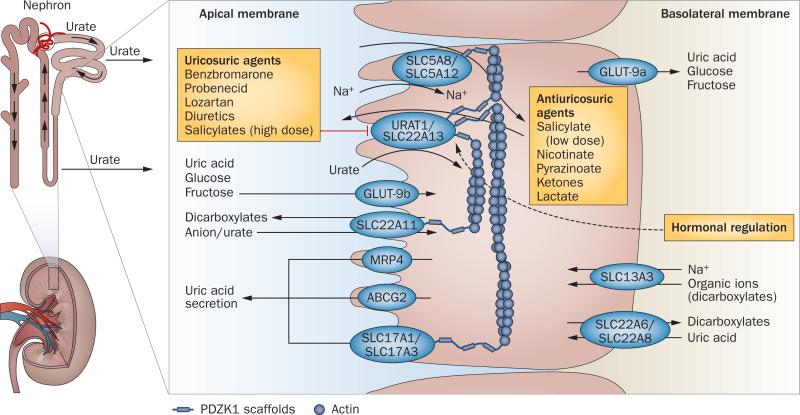Figure 2.
The uric acid transportasome. Urate transporters in renal proximal tubules are involved in the secretion and reabsorption of urate. The balance between these processes determines the net proximal renal excretion. Urate secretion involves SLC22A6 and SLC22A8, which transport uric acid into the epithelial cell across the basolateral membrane, and URAT1, SLC22A13, SLC17A1, SLC17A3, MRP4 and ABCG2, which transport uric acid out of the epithelial cell across the apical membrane. Reabsorption of urate across the apical membrane involves the urate-anion exchangers URAT1 and SLC22A13, which facilitate the entry of urate into the cell in exchange for monocarboxylates (transported into the cell by the sodium-dependent transporters SCL5A8 and SCL5A12) as well as SLC22A11, which exchanges urate and dicarboxylates (transported into the cell by SLC13A3). Antiuricosuric drugs can serve as the exchanging anion for URAT1 and, therefore, enhance urate transport. URAT1 is inhibited by uricosuric agents and might be regulated by hormones. The glucose transporter GLUT-9 also has an important role in reabsorption of urate; GLUT-9b transports uric acid across the apical membrane and GLUT-9a transports uric acid out of the epithelial cell across the basolateral membrane. The scaffolding protein, PDZK1, is involved in the assembly of a transport complex in the apical membrane.

